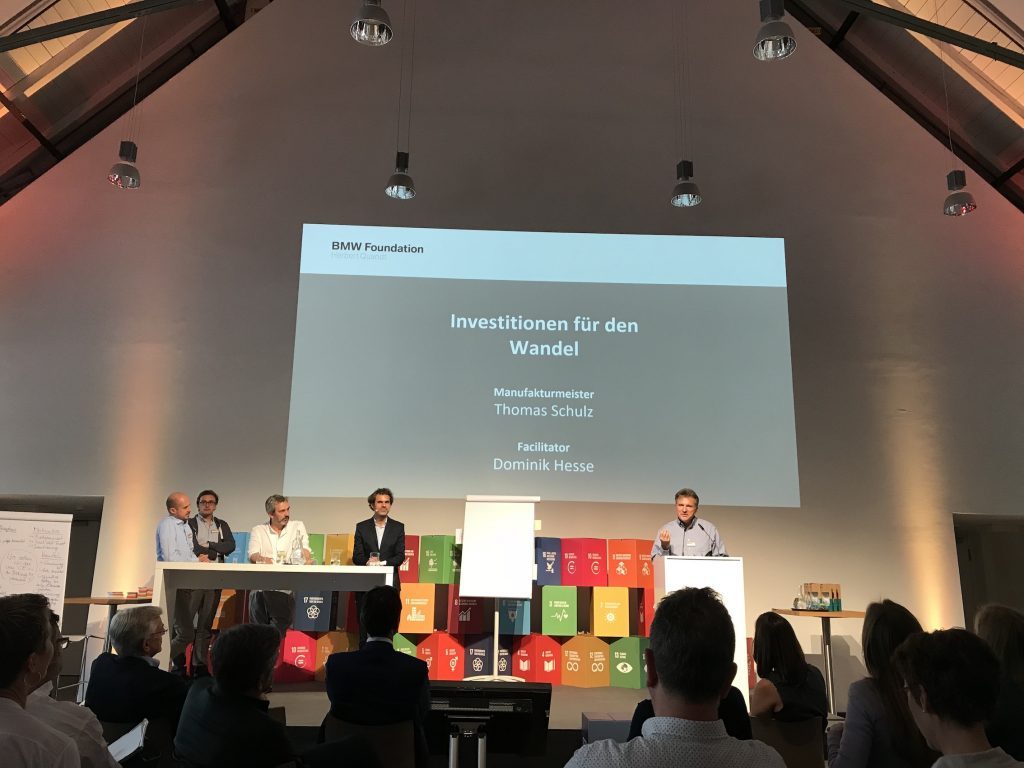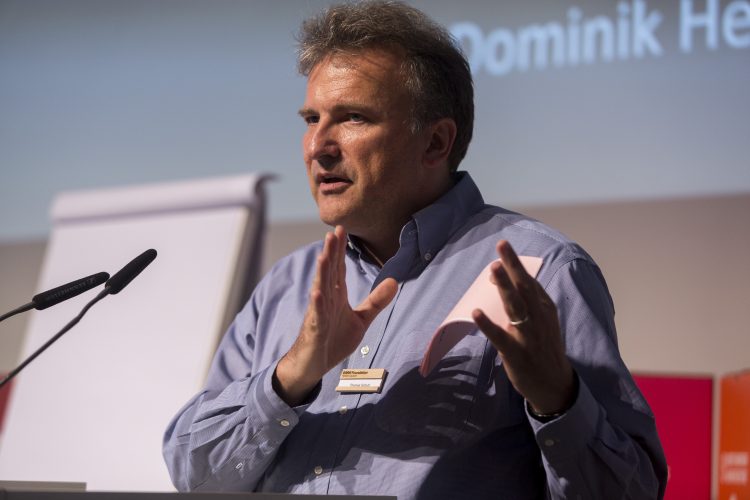At this year’s event on Circular Economy at the BMW Foundation Herbert Quandt experts, leaders and change makers discussed about how the path to a circular economy can look like. According to the BMW Foundation the Circular Economy is an alternative economic model with a huge economic potential for European Economies without compromising on nature and future generations.

Participants had the chance to discuss with experts in small groups about concrete ideas to a circular economy. Tom Schulz led the group “Investments for a change”. The team came up with five concrete answers:
First: CREATING CONSCIOUSNESS
The AQAL motto: “You cannot not invest”. Everybody is making investment decision all the time. How do you invest your time, your energy, your money right now?
“You cannot have no impact”. Everything we do has an impact, and we are responsible for making it a positive one.
The intention is important.
“How do we want to live and work?
There is no economic success without success for humanity (ethics!)
Second: EDUCATING
In Germany, education in economic and financial matters is in sad state. To become emancipated citizens, pupils and students must know more about how economies and financial markets work.
Bring state-of-the-art curricula into schools, universities, professional education programs. Topics: Impact Investing, Circular Economics.
Third: DOING
Don’t over-intellectualise, but do!
Invest in sustainable funds, invest in circular economy companies, clean up your portfolio by de-investing from fossil fuels, etc.
Measure the impact!
Fourth: MEASURING
There are several measurement frameworks available: B-Corp, GIIN, Global Grand Challenges Singularity University, UN Sustainable Development Goals …
There are objective KPIs available for social and environmental benefits.
Investors may emphasise different outcomes differently (what is more important? support education or fight climate change?)
There is no ONE currency to measure all different dimensions of return (financial return, social return, environmental return,…)
Fifth: TELLING
Spread the “gospel”, “evangelise”; report success stories and learnings;
Build awareness that impact and circular economy are a “return on investment”

Other key insights:
- Circular economy / impact is a de-risking tool for financial analysis
- Return on impact / CE does not replace the financial return, but is does complement it.
- Think long-term
- We need platforms to grow the movement across industries, social groups. Examples: Toniic (global action network for impact investors), and BMW Foundation Herbert Quandt, acatech,…
